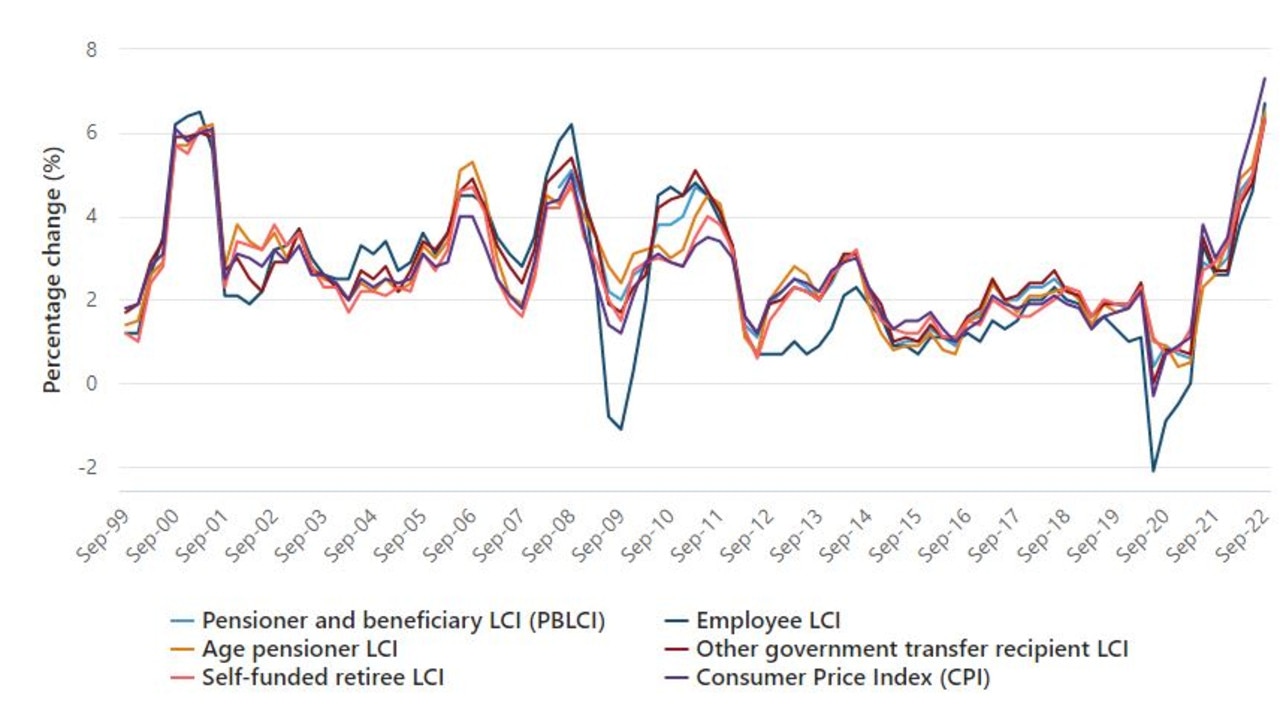Groceries, transport costs rising fast as inflation skyrockets
Inflation is biting working Australians the hardest it has since the introduction of the GST, new figures reveal.
No household has been spared from the skyrocketing cost of living, new figures reveal, with food and fuel prices causing Australians the most pain.
The Australian Bureau of Statistics published the living cost indexes for the last quarter on Wednesday, which measure the price change of goods and services and its effect on the living expenses of different household types.
The release comes a week after the bureau confirmed inflation had risen to 7.3 per cent, with a quarterly change to CPI of 1.8 per cent.
Compared to pensioners and government payment recipients who were hit with a cost of living increase in line with the CPI, employee households were hit with a 2.6 per cent increase to their costs.
It is the highest quarterly increase in working Australians’ household living costs since the introduction of the GST.

Self-funded retirees meanwhile noted a 1.9 per cent rise, just slightly above the quarterly inflation increase.
Food cost increases were the biggest strain for all household types, predominantly impacted by supply chain disruptions, increased transport and input costs, as well as floods.
ABS head of prices statistics Michelle Marquardt said the index further showed how changes in mortgage interest rates – which were hiked for the seventh consecutive month on Tuesday – were impacting households’ living costs.
She said employee households were particularly impacted by increases in mortgage interest charges, which rose on average 24.2 per cent over the quarter as the banks passed on the RBA’s cash rate rises.

“Higher food and automotive fuel prices in the past 12 months contributed to higher living costs for all household types,” Ms Marquardt said.
“Annually, food prices rose between nine and 10 per cent across the household types, driven by fruit and vegetables, while fuel prices rose around 18 per cent.”
Other housing related costs, namely utilities, also contributed to higher living costs, with prices rising between four and seven per cent in the past 12 months.
She noted the annual rise in the CPI was higher than that of any of the living cost indexes, mainly due to large price rises for new dwellings which were included in the CPI but not in the living cost indexes.
Conversely, the LCI include changes in mortgage interest charges, which have risen for the first time this quarter since June 2019.



